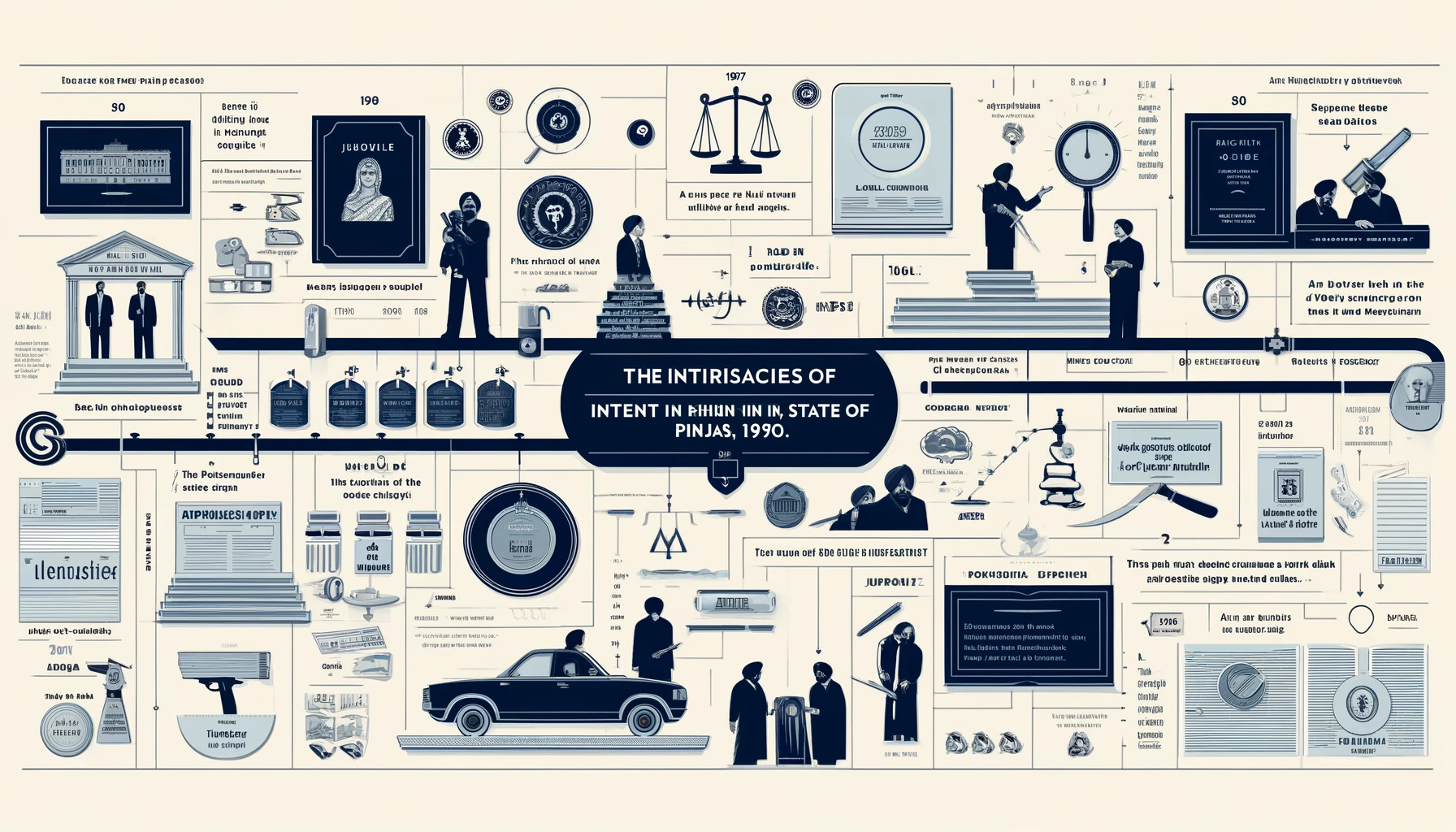
The difference between wanting to do something and actually doing it matters a lot in criminal law. A famous court case in India (Bachan Singh vs. State of Punjab) showed this. The court looked closely at the laws about murder and serious injury (grievous hurt) in the Indian Penal Code.
The important idea is that not everyone who hurts someone badly meant to kill them. This can affect whether they’re found guilty and how harshly they’re punished. The court stressed that understanding why someone did something is important. There’s a big difference between hurting someone so badly they die by accident and trying to kill them on purpose.
This case helps people who want to be judges understand the difficult concepts in criminal law and how judges can interpret the laws.
The Case Background
- Incident Date and Participants: The case revolves around an incident that occurred on September 30, 1952, involving Kapur Singh (the appellant), his son Pritam Singh, Bachan Singh (the deceased), and Chandan Singh.
- Initial Cause of Conflict: The conflict originated from an earlier altercation wherein Bachan Singh severely injured Pritam Singh, leading to the amputation of his leg.
- Act of Revenge: In retaliation, Kapur Singh, with the aid of Chandan Singh, attacked Bachan Singh, inflicting 18 injuries on his arms and legs with a gandasa, resulting in Bachan Singh’s death.
- Aftermath and Legal Proceedings: Following the attack, Kapur Singh fled, while Chandan Singh was apprehended. Both were eventually convicted under Section 302 of the IPC, and sentenced to death by the Sessions Judge, a verdict upheld by the High Court.
- Key Legal Question: The primary legal inquiry was whether Kapur Singh’s actions were driven by the intention to kill, aligning with Section 300 of the IPC, or if his actions fell under a different clause of Section 299 of the IPC.
- Court’s Observation on Intent: The court observed that Kapur Singh’s motive was revenge, specifically to cause harm to Bachan Singh as retaliation for his son’s injury. The court noted that the injuries were aimed at non-vital parts of the body, suggesting an intent to inflict severe harm rather than to kill.
- Conclusion and Sentence Revision: Ultimately, the court determined that Kapur Singh’s actions were more accurately classified under Section 304(1) of the IPC rather than Section 302. Consequently, the court modified the sentence from death to transportation for life, reflecting the absence of direct intent to kill.
Legal Interpretation and Impact on Sentencing
The heart of this judicial scrutiny lies in the critical examination of the appellant’s intent, a cornerstone in distinguishing between culpable homicide and murder under the Indian Penal Code. The crux of the matter revolves around discerning whether Kapur Singh’s actions, fueled by a vendetta, align with the deliberate intention to kill as articulated in Section 300, or fall within the ambit of Section 299, which deals with acts done with the knowledge that they are likely to cause death but without the intention to kill. This distinction is pivotal as it influences the severity of the sentencing. The case intricately explores the nuances of human intent, the boundaries between premeditated harm and fatal outcomes, and the legal interpretations that pivot on the fine line separating the two sections. Engaging with such complexities not only enriches the understanding of legal principles for judiciary aspirants but also emphasizes the profound responsibilities shouldered by the judiciary in interpreting the law to serve justice.
Key Takeaways for the Reader
- Understanding the distinction between Sections 299 and 300 of the IPC is crucial for legal practitioners.
- The motive behind a crime, such as revenge, plays a pivotal role in legal interpretations and outcomes.
- Analyzing the nature and locus of injuries is essential in determining the intent behind the act.
- Distinguishing between culpable homicide and murder requires a nuanced understanding of the law and the facts.
- The alignment of punishment with the nature of the crime underlines the judiciary’s role in delivering justice.
Conclusion
In short, judges have a very important job of explaining and applying the law. The Kapur Singh case shows the difference between meaning to do something bad and actually doing it. This is a big deal in Indian law. For people who want to be judges, this case is a reminder that they need to understand why crimes happen, not just what happened. The judge in this case decided not to give the death penalty because of the specific details of the crime. This case shows how judges can change people’s lives for better or worse, so they need to be wise and fair. If you want to be a judge, this case should make you want to fight for what’s right, pay attention to all the details, and follow the rules of the law. It’s a hard job, but important for making the legal system better.

